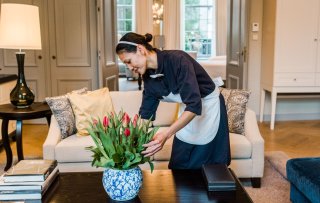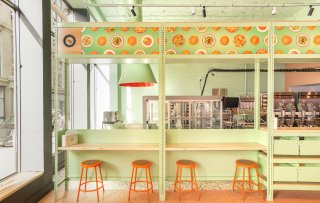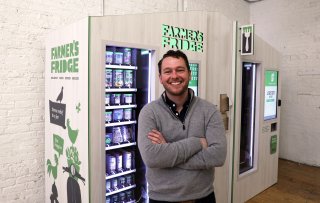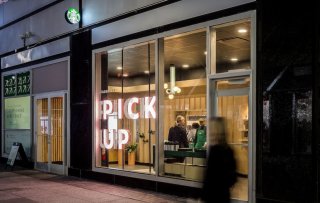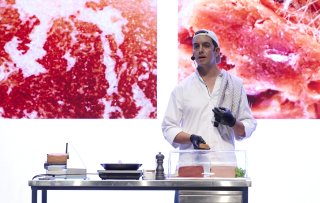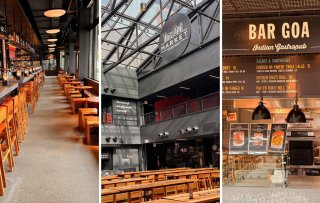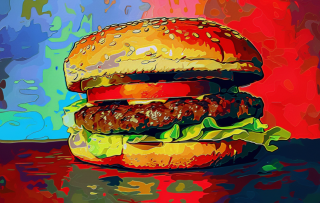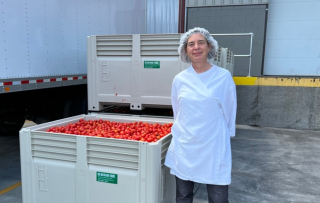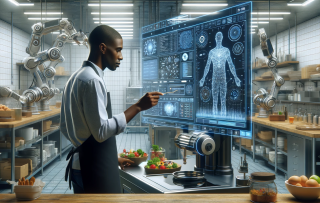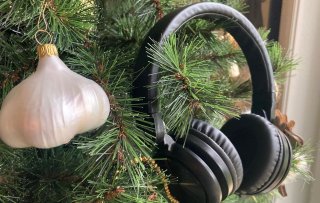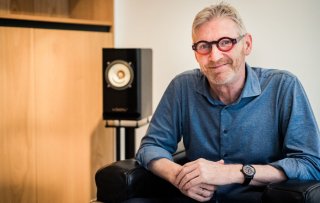Bill Birgen is the founder and Chief Technology Officer at SAVRpak. Before becoming an entrepreneur, Birgen worked on rockets, missiles and defense systems for over 30 years. Fed up with his own soggy lunches, scientist Birgen developed a pocket-sized thermodynamic solution that creates the perfect atmosphere inside his lunch box, keeping his salads and sandwiches fresh and crisp. The technology evolved into SAVRpak’s drop in solution, which eradicates condensation, the root cause of premature molding, wilting and spoilage of packaged produce like berries and leafy greens.
A better food system starts with a vision. In his podcast series Food Lab Talk, Google's Vice President of Workplace Programs, REWS, Michiel Bakker, interviews inspiring change makers working at the forefront of our most pressing food system challenges. Each month, Food Inspiration highlights one of these visionaries. The first season of Food Lab Talk focuses on reducing loss and waste in the food system and features Bill Birgen from SAVRpak.
How did you make the leap from rocket scientist to a player in the food waste space?
“At first, I was just solving a problem for myself. About 15 years ago, I was working on top classified projects, five stories underground in a heavily secured office building. I had to brown bag my lunch every day, because once you entered the building, there was no easy way to go out for lunch. One day I saw that condensation had ruined my lunch. I immediately knew what was causing this. It had to do with the environment inside the lunch box, and the need to keep it dry and controlled. With 30 years of experience in thermodynamics, I said to myself, ‘in my job I have solved this problem for satellites and multi-billion dollar defense systems, I can solve it for my lunch box’.”
“What I needed to do is leverage the dew point temperature in an accessible substrate, so in this case I created a little paper towel device. I made one that same night and then every working day over the next 12 years. Each day I would enjoy a great lunch that didn't have any condensation. My food remained fresh and crisp. That's how I got sucked into this food waste dialogue, solving a problem for myself, but not yet realizing the global implications.”
Early 2023, SAVRpak was proclaimed as one of the most innovative companies in food of 2023 by FastCompany
Describe the moment when you realized there was a broader opportunity for your lunch box solution?
“I didn't have that realization for 12 years. I was just happy to be eating my fresh lunch every day. It wasn't until food delivery became a big thing. Grubhub, Postmates, Uber Eats, all these platforms were new and growing fast. I had several friends complaining to me about the poor quality of delivery food. They said, ‘Bill, you're a smart guy, you gotta fix this.’ And in my head, I started thinking, ‘I've already fixed this. Why don't I file a patent for this solution and see what happens’.”
The patent got approved and the next step for Birgen was to conduct some product validation. “I didn't know anything about food tech or the food space in general. Just a few months after the patent was approved, in 2018, I presented it for the very first time in public to an audience of almost 2,000 people at the Smart Kitchen Summit in Seattle. I was shocked that they let me pitch. For three and a half minutes, I talked about condensation and the thermodynamic nuances of my solution. I won out of 10 finalists, with the judges unanimous in their selection.” Today SAVRpak is active in the B2B-market in over 20 countries, with hundreds of restaurants using the innovation. In 2022, the company also launched a consumer solution. It helps to keep food fresher and ensures consumers never have to throw out delicate berries or leafy greens, like arugula, kale and spinach again.”
How did the audience initially respond to your solution?
“We launched into food delivery and food service in 2021. Food waste is such a multifaceted problem. Initially, the reaction to our innovation was somewhat suspicious. We had people asking, ‘this idea is so simple, why didn't somebody else think of it?’ The solution is deceivingly simple in its embodiment, but the thermodynamics involved are both complex and nuanced. There is the dew point temperature. We're balancing the enthalpy of the latent heat of fusion against the latent heat of vaporization for a thermodynamically neutral solution. We're leveraging the dew point from drier air, and drier air stifles a microbial load. You need to understand all these underlying principles to create a balanced solution that's just powerful enough - not too much, not too little - for the application you need. It must be tailored to the specific circumstances. And then, once people see the results, they embrace the solution.”
"We’re using a technology that hasn’t been considered before"
“We've been operating in the consumer produce space, targeting farm fresh produce, since 2022. Initially, the farmers' response was somewhat mixed. Some farmers are skeptical, oftentimes because they were disappointed by previous innovations that claimed to offer the perfect shelf life extending solution. They ask us ‘why should we trust you?’ I immediately tell them that we're not just another ethylene gas absorber. In fact, ours is a totally different technology. Food scientists are chemists at heart, so naturally they look for chemical solutions. Obviously, my background in thermodynamics is different, and I'm using a kind of technology that hasn’t been considered before. And then again, once people see the results, they open up to it and we change their perception.”
“Farms initially are worried about interruptions in their operations. That’s another strenght of our solution. It doesn't require any big capital investment, it goes into existing operations. So, as we are removing all the hurdles and speed bumps, we see an increase in the willingness to test and implement our solution by farmers. What has been a huge milestone for us was third party validation by UC Davis as a trustworthy and proven solution. UC Davis has impeccable credentials and this validation helps tremendously. Sometimes our solution is even imposed by the retailer that simply tells the farmer that they need to implement our SAVRpak solution, conduct a trial, test it thoroughly and share the results. There is definitely a push and a pull.”
"We make the solution, but we can't force the implementation or adoption"
“Of course, we are still a very small organization. As a start-up, you have to choose a focus market. We have chosen to first focus our resources on B2B before we moved to the B2C market. Our produce solution is only about one year old and that really started when we won the United Nations Sustainable Agriculture Technology Challenge. This is when we became aware of the many smallholder farms that are not having access to markets. Our solution got the United Nations so excited that we ultimately won.”
“If SAVRpak can extend the shelf life and help smallholder farms reach new lucrative markets that weren't previously available, that is potentially a massive improvement for their business model. We did a successful trial shipping blueberries from Colombia to China by sea freight, and another trial shipping raspberries from Mexico to Canada by semi truck transportation. Before, this was impossible. Enabling smallholder farms to reach new markets is making our solution even more relevant. At the same time, with an extended shelf life, we are able to provide people that live in food insecure environments with fresh produce.”
When you look in your crystal ball, where do you see the biggest opportunities for your organization?
“Long term, I believe the biggest opportunity is in our retail solution. In the U.S. people throw away almost $2,000 per family of food annually. And it's not just economics. Food waste also causes greenhouse gas emissions. Wasting food just doesn't make sense. Five years from now, I see a huge opportunity for the consumer solution to gain traction. I also anticipate tremendous growth in meal prep and brown bag lunches. The consumer solution will take more time to fully develop.”
“SAVRpak is not just a one trick pony. We offer other solutions as well. We have an E. coli detection system that comes in a similar little sachet. It has a reagent in it that leverages the dew point temperature by pulling moisture out of the air. This is moisture that came from the food, so we can test the food for E. coli or allergens without touching it. We also have a grab and go solution that we developed with wholesale supplier Georgia-Pacific. All of these technologies are patented, and we can't wait to develop more solutions.”
.jpg-28x28.jpg) Written by
Written by 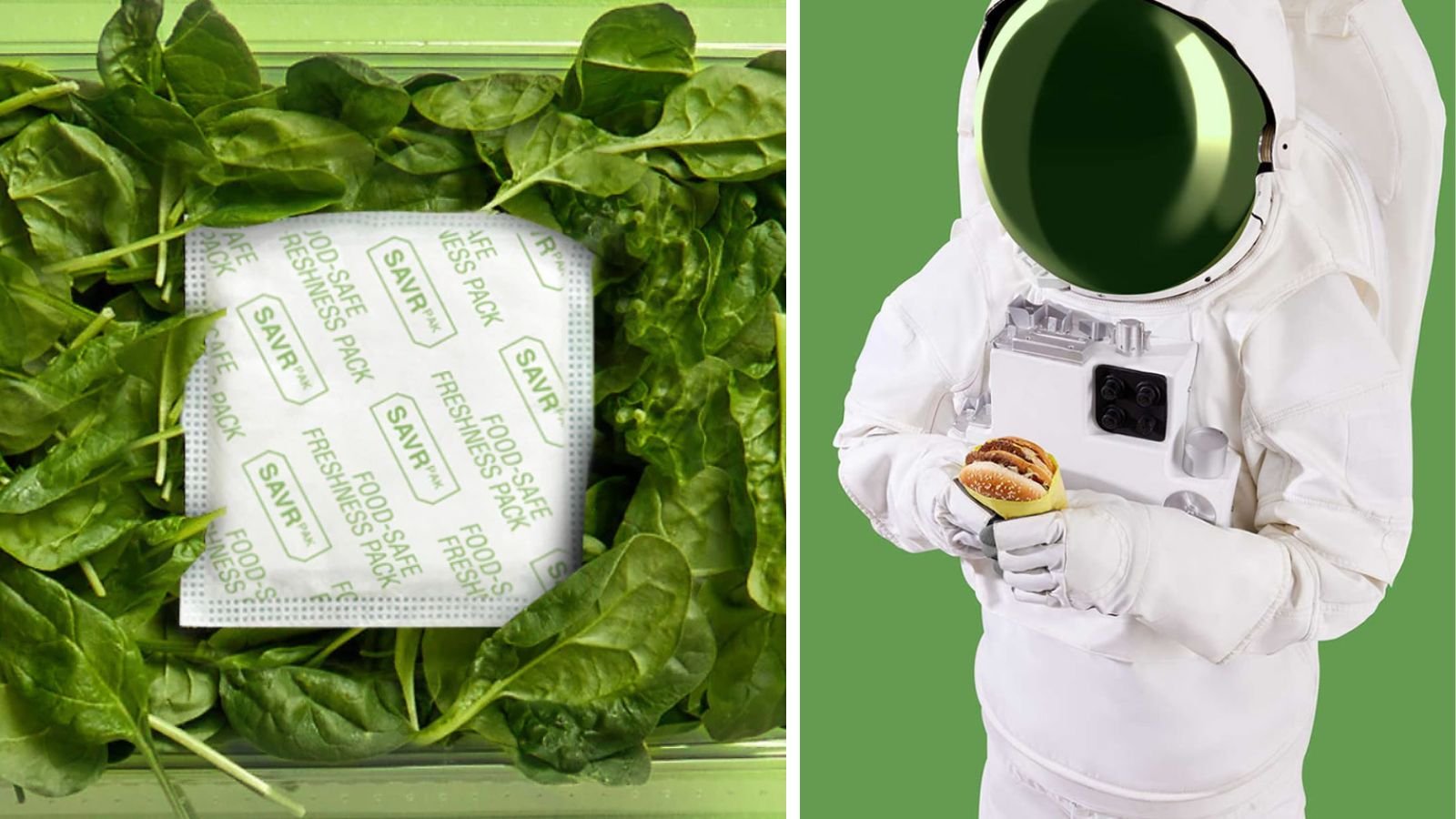
.jpg-300x300.jpg)
.jpg-50x50.jpg)











